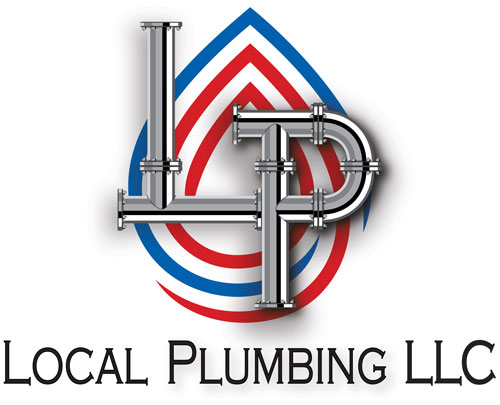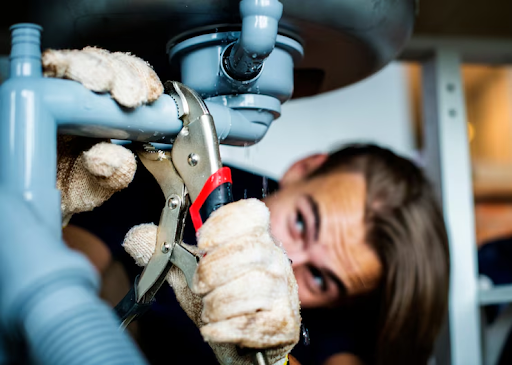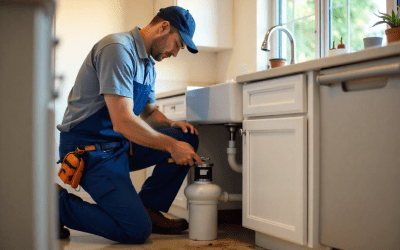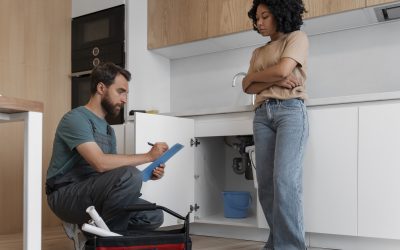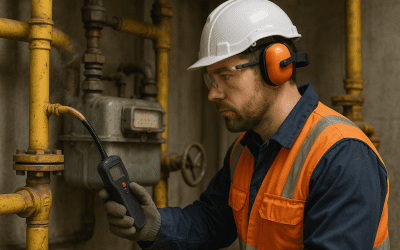This happened as Texas homeowners often underestimate the risks of freezing temperatures, assuming their plumbing can withstand occasional cold snaps. One of the major reasons for these failures is frozen pipes as they are located in crawl spaces, attics, and exterior walls, which often lack proper insulation and make them highly susceptible to freezing when temperatures plummet.
If you are planning to protect your pipes from this freezing nightmare this season, this guide is for you. We’ll cover everything—from why pipes burst to the best preventive measures you can take to avoid plumbing failure.
How Do Pipes Freeze and Burst?
When temperatures fall below 32° Fahrenheit (0°C), the water inside exposed pipes begins to freeze. As water freezes, it expands, exerting immense pressure on the pipe walls. Eventually, the pressure can cause pipes to crack or burst, releasing hundreds of gallons of water into your home.
| According to a North Texas Municipal Water District report, a single burst pipe can result in the loss of thousands of gallons of water. Therefore, always act quickly to avoid last-minute trouble and financial strain. |
Tips to Prevent Frozen Pipes in Texas
A little preparation can go a long way in protecting your system for plumbing in Texas from freezing. Here’s what you can do:
1. Insulate Your Pipes
Keeping exposed pipes insulated is one of the best ways to prevent freezing. The U.S. Department of Energy recommends using pipe insulation sleeves, foam rubber, or fiberglass insulation to wrap vulnerable pipes. Focus on:
- Pipes in attics, basements, crawl spaces, and garages.
- Exterior walls where pipes can be less protected.
- Outdoor faucets, hose bibs, and sprinkler systems.
If you’re in a hurry, you can wrap pipes in old towels or newspapers to provide temporary protection during a sudden freeze.
2. Keep Water Flowing
Moving water is less likely to freeze, so you can prevent ice blockages by keeping a small trickle of water flowing from your faucets. Along with this, focus on the below-mentioned points:
- Let both hot and cold water drip from exposed faucets during extreme cold.
- Focus on taps farther from your main water supply to keep water moving through the entire system.
| PRO TIP: It is recommended to allow faucets to drip when temperatures fall below 20°F (-6°C), as this is when most pipes begin to freeze. |
3. Maintain a Warm Indoor Temperature
A study from the University of Illinois Extension found that maintaining a consistent indoor temperature reduces the risk of frozen pipes. Therefore, it is crucial to keep your home warm to prevent frozen pipes. Follow these below-listed things to do so:
- Set your thermostat to at least 55°F (13°C), even when traveling.
- Allow warm air to flow around pipes by keeping cabinet doors under sinks open.
- If you experience a power outage, use safe heating alternatives, like a propane heater (with proper ventilation).
- Seal gaps around windows, doors, and pipe openings to prevent cold air from seeping in and lowering indoor temperatures.
| PRO TIP: Use a simple trick to check for drafts. Simply hold a lit candle near windows, doors, and pipe openings. If the flame flickers, there’s an air leak that needs sealing. |
4. Winterize Outdoor Plumbing
Outdoor plumbing systems are highly vulnerable to freezing. To prevent this, take these steps:
- Disconnect and drain garden hoses before winter.
- Shut off and drain outdoor faucets using a frost-proof cover.
- Blow out sprinkler systems before temperatures drop.
5. Open Interior Doors for Better Air Circulation
When interior doors are kept open, warm air can circulate more freely, reducing the risk of frozen pipes. This is especially helpful for pipes located near exterior walls.
- Keep bathroom & kitchen cabinet doors open to expose pipes to warm air.
- Ensure heat reaches all rooms, even those you don’t use often.
- Avoid closing vents in rooms with plumbing.
6. Use Pipe Heating Cables for Extra Protection
For high-risk areas, self-regulating pipe heating cables provide an added layer of protection. These cables automatically adjust heat output based on the surrounding temperature.
- Ideal for pipes in attics, crawl spaces, and unheated areas.
- Easy to install—wrap them around pipes and plug them into a power source.
- Available with built-in thermostats for energy efficiency.
When to Call Professionals to Deal With Winter Plumbing Issues
While some winter plumbing issues can be handled with DIY solutions, others require the expertise of a professional plumber. When it comes to plumbing for Texas homes, here’s when you should call in the pros:
- No water coming from faucets – Your pipes are frozen and need expert thawing.
- Pipes are visibly cracked or leaking – Shut off the water and call a plumber immediately.
- Low water pressure after a freeze—This could indicate hidden pipe damage or blockages.
- Banging or whistling noises from pipes – Ice buildup or pressure issues can cause damage.
- Water pooling around exposed pipes – A clear sign of a burst or leaking pipe.
- Frozen outdoor faucets or hose bibs – This can lead to pipe bursts inside your home.
- Persistent drain clogs – Cold weather can harden grease and debris, blocking pipes.
- Unusual smells from drains – Ice blockages can cause sewer gases to back up.
- The water heater is not working properly – Freezing temperatures can strain your system.
- Previous winter plumbing issues – If you’ve had problems before, a plumber can winter-proof your system.
A timely precaution can save you from costly repairs and extensive water damage. If you have frozen pipes that suddenly burst, then call a licensed plumber for emergency repairs from Local Plumbing LLC. With 13 years of experience in the industry, we understand this is an emergency therefore, we always ensure to quickly handle your repair without costing you a fortune. Whether you are looking for a reliable plumber in Schertz, New Braunfels, San Antonio, or plumber in Cibolo, we serve throughout Texas. Don’t wait for a disaster—contact a trusted Schertz plumber today for expert winter plumbing solutions!
